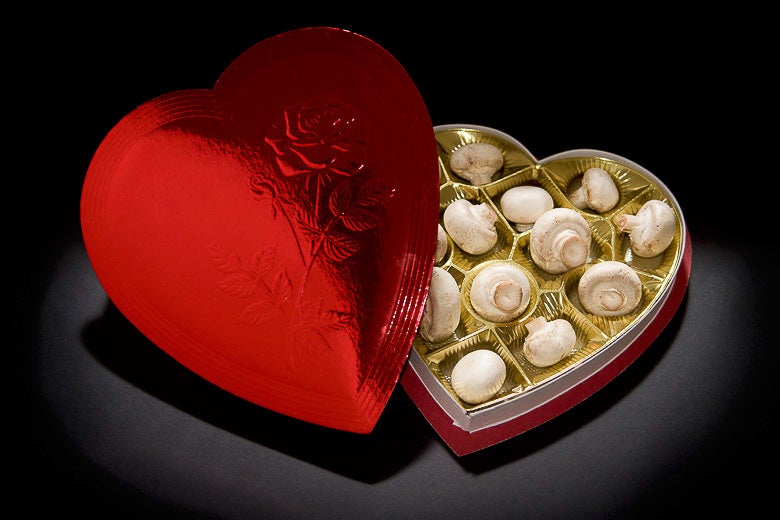
Stanford biologist Kabir Peay says romantic evenings and traditional Valentine’s Day gifts wouldn’t be the same without fungi. (Image credit: L.A. Cicero)
If you’re tired of giving chocolates and roses on Valentine’s Day, Stanford biologist Kabir Peay suggests that you consider mushrooms and other fungi.
“I can’t say that I personally find fungi to be romantic, but as a biologist who studies fungi, I recognize that they play an integral part in most romantic evenings,” he said. “Good food, wine and chocolate wouldn’t be the same without fungi.”
Fungi are intentionally introduced at various stages during the production of wine and chocolate. In the case of chocolate, fungal enzymes are required to break down some of the bitter compounds in the cacao nuts before they are ready to be turned into chocolate. For wine, fungi known as yeasts convert the sugar in the grapes into alcohol.
Indeed, fungi can replace almost any Valentine’s Day gift. Fungi have been found to be some of the oldest and biggest living organisms, thus representing longevity as well as any diamond. “One ‘humongous fungus’ in Oregon is estimated to extend across more than 3 square miles, weigh over 7,000 tons and be thousands of years old,” Peay said.
Mushrooms themselves are culinary delights, and none are more famous or sought after than the truffle. The fungal truffle lent its name to the confectionary treat in the 1920s and is still a worldwide delicacy. Peay describes the scent and flavor of truffles as musky, earthy and incredibly intense. The scent is special in other ways, too.
Truffles grow underground, so to reproduce they need animals to dig them up, eat them and disperse their spores. In order to attract animals to them, truffles release chemical scents similar to pheromones produced by mammals. One of these chemicals, androstenone, is the main sex hormone produced by boars and can be found in their saliva. For this reason, truffle hunters often use female pigs to track down the elusive mushrooms.
Androstenone can also be found in human sweat, leading some people to consider truffles to be aphrodisiacs.
“I think more scientific evidence would be warranted before making a strong conclusion,” Peay said. “But it’s hard to explain the fact that truffles can sell for up to $10,000 per pound if they’re not.”
The price may deter people from using truffles as gifts, but it is still possible to recognize the ways fungi contribute to a good Valentine’s Day. Said Peay: “My wife and I probably celebrate in the same way most people do, with good food, wine and chocolate, but always with an appreciation for the importance of fungi in making it all possible.”
Media Contacts
Bjorn Carey, Stanford News Service: (650) 725-1944, bccarey@stanford.edu